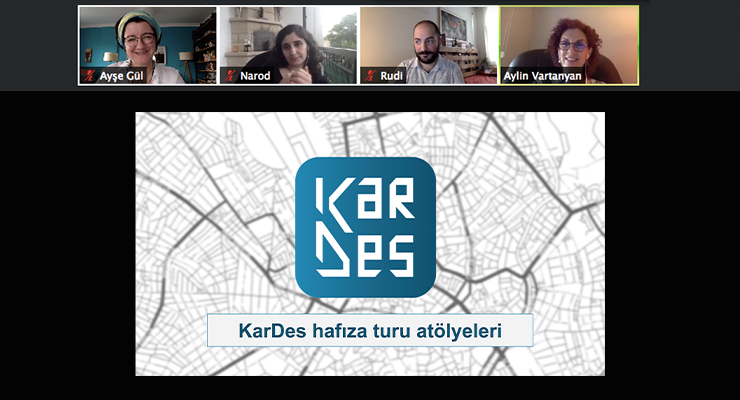KarDes: Multicultural Memory Tours Guide mobile application, launched by the Hrant Dink Foundation, offers its users two new memory tours from Izmir after Istanbul and Ankara. With the new Armenian Quarter and Karataş tours, you can discover the multicultural stories of the residents and the buildings of these two neighborhoods.
KarDes will continue to add new memory tours to Izmir content.
Armenian Quarter
Izmir Armenians lived in the Haynots,which means "the place of the Armenians".In the early 20th century, Armenians consisted of only 10 thousand of İzmir's population of 300 thousand in total.Yet,they played a crucial role in the commercial,artistic and cultural life of the city. Armenian merchants were prominent in trade relations with Europe. Among the wealthiest Armenian families from Izmir were the Yusufyans, Kuyumcuyans and Ispartalians. The fig sorting and packaging facilities of Elmasyan Brothers were even featured on Izmir postcards of the period. Armenians were influenced by the West through their European relations. Cultural renaissance began with the entry of women into education,the establishment of new schools,the formation of theater groups and the opening of printing houses. Izmir became the Athens of the Armenians. According to the testimonies, the 1922 Fire, which destroyed the Christian settlements in Izmir, started in the Armenian Quarter. After the fire, not a single building remained in the neighborhood. A new city was built on the ruins and the Armenian Quarter was wiped off the map.
Karataş
Taking its name from the dark stones quarried in the region, Karataş was known as the new Jewish Quarter, since Jews constituted a significant portion of its population at the beginning of the 20th century. The Greeks of Izmir called the area Melantia. Karataş was a multicultural district where Jews, Greeks, Armenians and Turks lived together, each community having its own school and place of worship. Resembling Galata in Istanbul, Karataş was an attractive area with its seaside cafes and the panoramic terrace of the Asansör. Following the forced departure of Armenians and Greeks from Izmir in 1922 and the subsequent migration of the Jewish community in the following years, many of the non-Muslim structures in Karataş were either demolished or converted for other uses.
What is KarDes?
KarDes is a mobile application designed as a personal tour guide in Turkish and English languages for users who wish to discover the multicultural legacy and multilayered fabric of Istanbul, Ankara and Izmir.
KarDes, which aims to make visible unknown sites in well-known neighborhoods and allows their stories to be told, offers over 30 memory tours, each lasting an average of two hours and reveals the multicultural pasts of various areas. Users can access the alternative history narratives of cities with neighborhood tours and thematic tours consisting of selected stops on specific topics. With this application, KarDes users can discover a cultural inventory consisting of close to one thousand sites such as mosques, churches, synagogues, schools, and cemeteries. As they walk along routes that make this multicultural legacy visible, they can hear hidden stories of the cities, told by well-known artists.
Aiming to make visible the urban and social memory which has been on the verge of extinction, KarDes offers excerpts from neighborhood talks and oral history interviews, providing the opportunity for users to listen to the stories of these neighborhoods and their transformations from the voices of residents. With around 70 oral history interviews, KarDes presents the stories of sites in various neighborhoods through a dynamic narrative.
Click to download KarDes: Multicultural Memory tours Guide mobile application for free.
![]()




